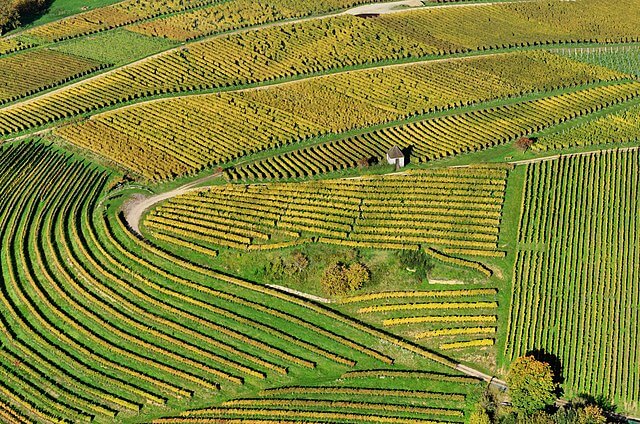
Vineyards are usually harsh environments for earthworms, with bare, compacted soil maintained by machinery and frequent pesticide use.
Worms rely on vegetation to feed on microorganisms, and compacted soil prevents them from moving freely. Pesticides further threaten these crucial invertebrates, whose burrowing aerates soil and recycles organic matter—functions that help sustain ecosystems as diverse as the Amazon rainforest. In the UK, earthworm populations have fallen by a third over the past 25 years due to pesticides and over-tilling.
Scientists and winemakers are now exploring ways to make vineyards more welcoming for worms.
Marc-André Selosse, a professor at the National Museum of Natural History in Paris, recommends increasing plant and grass cover and reducing tillage.
Selosse said: “In France, the vineyards are 3% of the agricultural area, and they are using 20% of the chemicals. In vineyards, for the soil there is a lot of treatments, so there’s a lot of compaction, and there is a lot of pesticides used. This all doesn’t mean the soil is dead because dead soil doesn’t exist, but it is the soil on which there is the most to do and on which we have a lot of data to do better.”
While worms have not disappeared from heavily farmed vineyards, regenerative practices are needed to support them.
“I think the worms are at a low level,” he said. “They are just surviving, but they are still there, which means that no one is thinking of buying earthworms for the soil, because they are there. It’s like Sleeping Beauty; they are there at very low level, and we have to wake them. But once again, in soil, we have resilience. It’s one part of biodiversity where they are so numerous that we were not able to kill all of them.”
Selosse emphasises that stopping tillage—breaking up and turning over soil—is the most effective step, even if herbicides like glyphosate are still used to manage weeds.
“When you go to no tillage, even when you use glyphosate, you increase the biomass of microbes [which the worms eat] by 30% which means that it’s better. It doesn’t mean it’s perfect, because you use glyphosate, but because of no tillage, it is better. In the future, sooner or later, we’ll have to stop glyphosate also but for now, tilling is the first cause of worm problems.”
Some UK vineyards are already producing worm-friendly wine. Jules and Lucie Phillips, owners of Ham Street Wines in Kent, rejected conventional advice to till and use pesticides.
Jules said: “After we did that, we went out and we dug a soil pit immediately after planting, and then also later in the season, and we realised the soil was just dead. There were no worms. It was smelling not particularly interesting at all, and the structure was poor.”
The pair had a revelation. “We just thought, this is completely the wrong way of farming and we need to do something different. We want life in our soils. And so we began the conversion to organic in that same year, and we’re now certified biodynamic.”
Instead, they applied herbal teas to vines to boost plant health.
Jules said: “For example, horsetail tea has a real high silica content, and that improves the leaf cell wall and means that it’s more resilient.”
The couple run a no-till system under the vine: “We’ve let the cover crop grow really long, and we typically let it grow right up into the canopy up until about flowering, and then we’ll mow it back. And the benefits of that are huge. The cover crop is really growing and really establishing that root structure and getting it to its maximum point. And finally, we put a big mulch on top of the soil that’s going to feed those worms and feed that soil life.”
This has hugely helped their worm population: “We’ve seen our worm counts increase massively from basically none to around 20 or 30 in a spade full. So extrapolate that up to a square metre, and it’s a very decent volume.”
Rob Poyser, a viticulturist with the regenerative wine consultancy Vinescapes, noted that allowing wildflowers to flourish across vineyards has also delivered excellent results, creating a more supportive environment for earthworms.
“We think in between three and five years we can take a bare soil and bring it back to life, into a thriving ecosystem,” he said. “We’ve used things like cover crops to bring this vineyard to life, to build the fertility into this system, and organic matter. We’re bringing life back to these soils we’re using. We’re letting nature do it.”
——————————————————————————
At Natural World Fund, we are passionate about restoring habitats in the UK to halt the decline in our wildlife.

